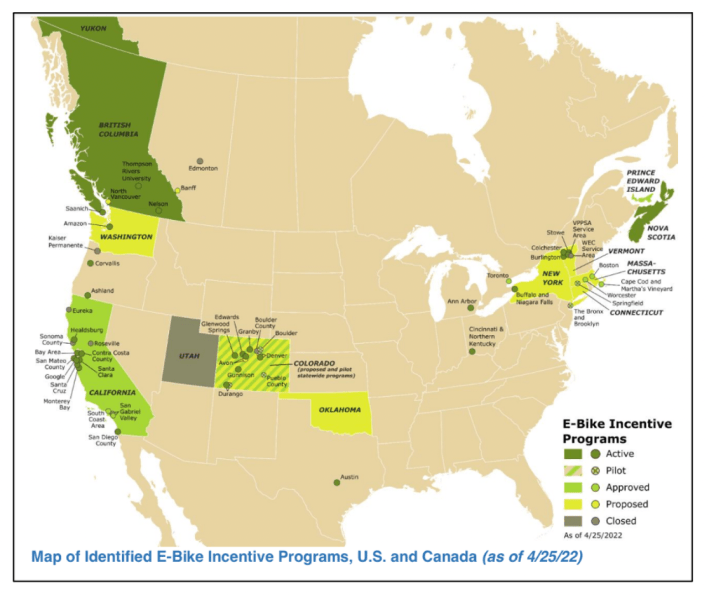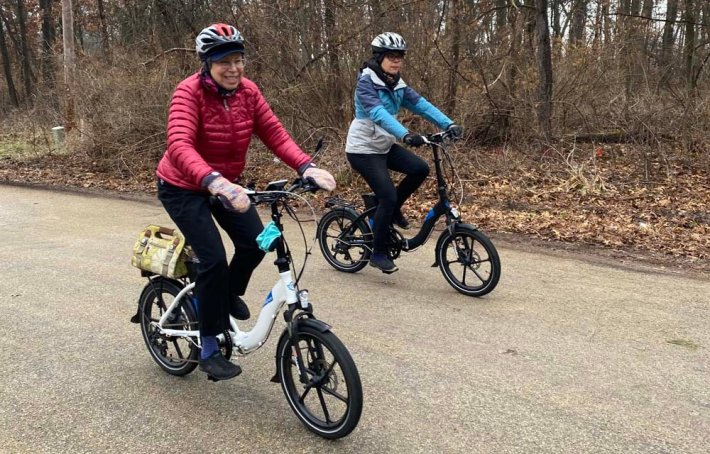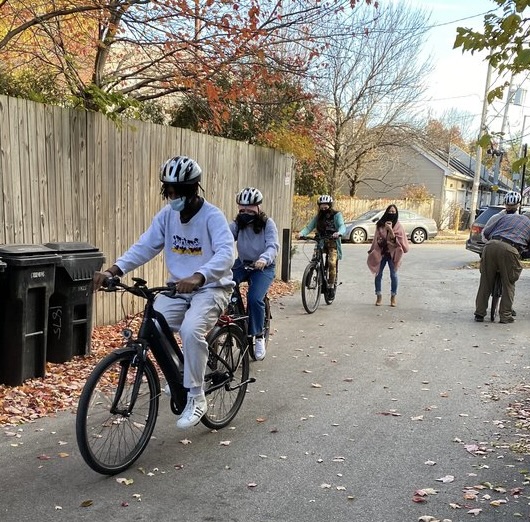Electric bicycles have the potential to be a game-changer for sustainable transportation, because they enable people to get around cities basically as quickly and conveniently as driving, as well as transport kids and other cargo, covering longer distances with less effort and sweat than traditional bikes. They're also useful for some people with mobility issues who might not otherwise be able to ride a bike.
That could make cycling for transportation practical and appealing to a much wider demographic. But the higher cost of e-bikes discourages people from buying them who might otherwise be interested in converting more of their trips to two wheels.
E-bike incentive programs like tax credits, rebates, vouchers, and lending libraries are becoming increasingly common in North America. For example, earlier this month, the Chicago-based mobility justice nonprofit Equiticity launched a Mobility Opportunities Fund that offers North Lawndale $750 stipends to help buy electric bicycles and $1,500 vouchers to purchase e-cargo bikes. But there's no statewide incentive to buy e-bikes in Illinois.

The statewide bike advocacy group Ride Illinois and Chicago-based Active Transportation Alliance are trying to change that by pushing for an Illinois e-bike incentive program. Environmental Law & Policy Center, Equiticity, the Illinois Environmental Council, and the Metropolitan Planning Council are also supporting the campaign.
In Illinois, there are three approved e-bike classes, all of which limit the motor to 1 horsepower (750W):
- Class 1 e-Bikes are pedal-assist only, with no throttle, and have a maximum assisted speed of 20 mph.
- Class 2 e-Bikes have a maximum speed of 20 mph, but are throttle-assisted.
- Class 3 e-Bikes are pedal-assist only, with no throttle, and a maximum assisted speed of 28 mph.
In a post about their proposal, Ride Illinois and ATA noted that as of 2021, twice as many electric bicycles were sold in the U.S. than cars. They pointed out that further encouraging e-bike use would not only benefit the people who ride them, but society as a whole by reducing congestion, pollution, and wear-and-tear on roads and bridges.
"The benefits of e-bikes for transportation are easy to understand because they allow you to reduce your carbon footprint, arrive less exhausted and sweaty, are easy to park, and often allow you to fly around traffic, enabling you to get to your designation faster, and are more cost-effective than an electric car," said Sharon Kaminecki, owner of the Logan Square bike shop Earth Rider Cycling.
In general electric bicycles are exponentially cheaper to buy and use than cars, but a quality e-bike can cost $2,000 or more, which many people view as cost-prohibitive. Ride Illinois and ATA noted that the national advocacy group People for Bikes has called e-bike vouchers, "a low-cost, accessible and efficient solution for achieving our nation's climate, sustainability, health, and transportation goals."
Here are some of the common features of an e-bike incentive program, according to Ride Illinois and ATA:
- Total amount of funding available
- Discount rate
- Maximum incentive
- Minimum and maximum purchase price
- Income qualification
- Classes of e-bikes that are eligible
- Approved locations to purchase e-bikes
"The initial investment can be a barrier for many people, which is why it makes sense to establish an e-bike incentive program to make it possible for more people to ditch an auto and experience the joy of two-wheel transportation," said Kaminecki.

Ride Illinois and Active Transportation Alliance decided to join forces to lead the charge (pun intended) on the e-bike incentive program after realizing they were having the same internal conversations about what such an initiative would look like. For example, would it make sense to focus on a city- or state-wide program? And what incentives could be provided for low-income people to buy e-bikes?
"We started having conversations with some of the other cities that started their incentive programs like Denver and the state of Connecticut," ATA advocacy manager Alex Perez told Streetsblog. From there they started reaching out to state lawmakers to see if there was interest in introducing a new state law to create an incentive program. He added that the advocacy groups want to make sure Illinoisans can take advantage of the incentives from the point of purchase, without needing to jump through additional hoops prior to buying an e-bike.
"It's a mix of educating ourselves about existing programs and educating the public so that they just know what this is," said Ride Illinois executive director Dave Simmons. "So when it comes up or someone reads a headline 'Illinois Develops E-bike Incentive Program,' and [sees that the state is allocating] x-million dollars, they'll be some understanding as to what it is and why it's important."
Perez said the advocacy groups and their allies are still determining where the funding for the incentive program might come from. They do know they want the funding for a statewide program to come from the state of Illinois, rather than local governments.
"One of the things we learned from other states is that these efforts oftentimes fail the first time around," Simmons said."That's in part because of a lack of awareness from the decision-makers, the elected officials, but also because it is challenging to determine where the funding is going to come from. So the goal is to work with several Illinois reps who have expressed interest, and there's also a state senator who has expressed interest, and work with them to determine what are the potential funding sources."





